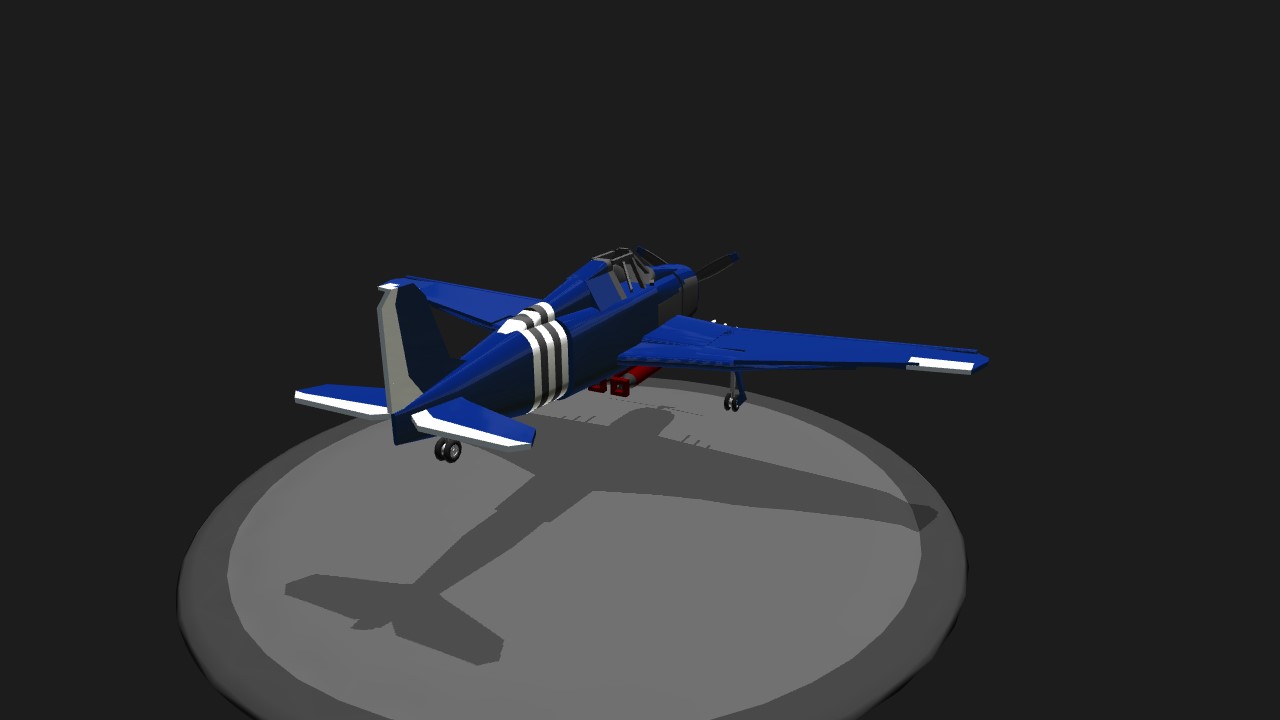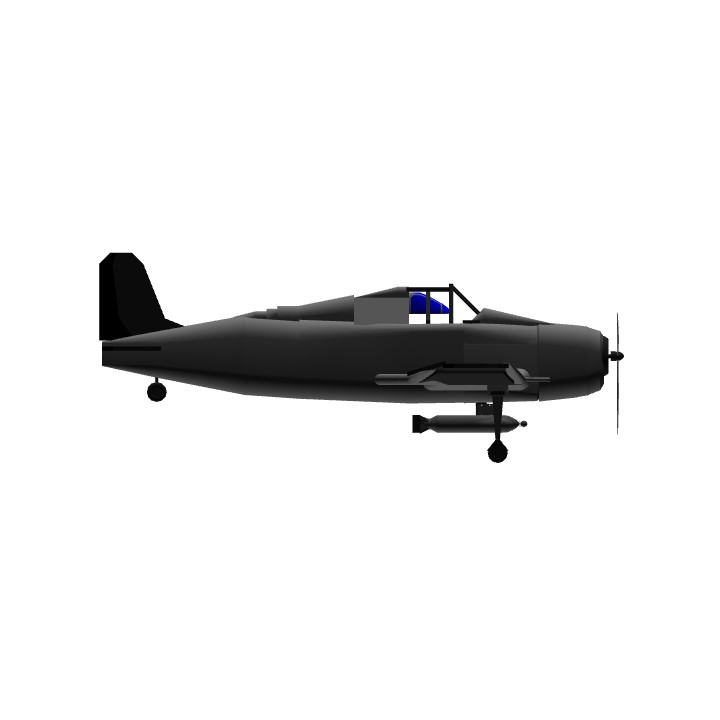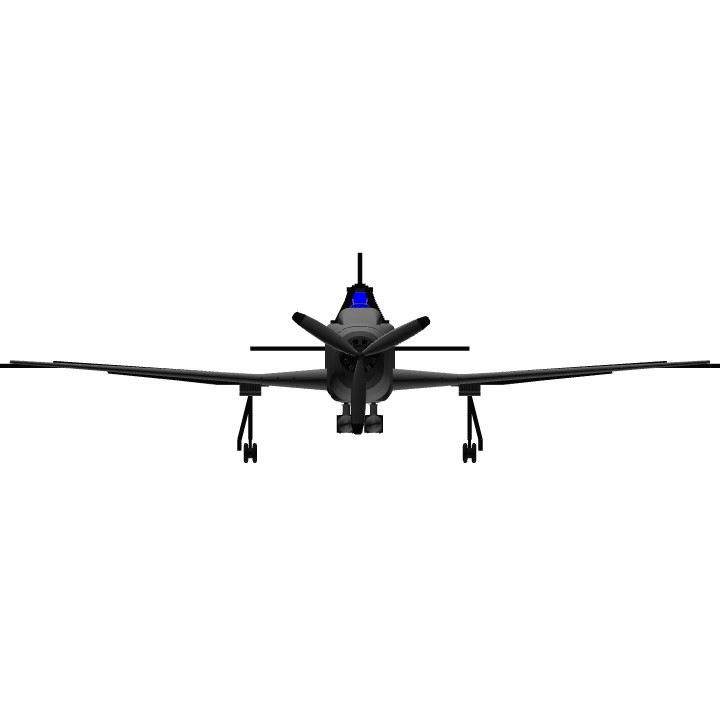Good airplane. Old-fashion shassis retracts on vtol_down. 1 and 2 activations groups detaches bombs. The Grumman F6F Hellcat was a carrier-based fighter aircraft designed to replace the earlier F4F Wildcat in United States Navy (USN) service. The Hellcat competed with the faster Vought F4U Corsair for use as a carrier based fighter. However, the Corsair had significant issues with carrier landings which the Hellcat did not, allowing the Hellcat to become the Navy's dominant fighter in the second part of World War II, a position the Hellcat did not relinquish. The Corsair instead was primarily deployed to great effect in land-based use by the U.S. Marine Corps.Although the F6F resembled the Wildcat in some ways, it was a completely new design,[4] powered by a 2,000 hp Pratt & Whitney R-2800, the same powerplant used for both the Corsair and the United States Army Air Force's (USAAF) Republic P-47 Thunderbolt fighters. Some military observers tagged the Hellcat as the "Wildcat's big brother".[5]The F6F was best known for its role as a rugged, well-designed carrier fighter which was able, after its combat debut in early 1943, to counter the Mitsubishi A6M Zero and help secure air superiority over the Pacific Theater. Such was the quality of the basic simple, straightforward design, that the Hellcat was the least modified fighter of the war, with a total of 12,200 being built in just over two years.[6]Hellcats were credited with destroying 5,223 aircraft while in service with the U.S. Navy, U.S. Marine Corps and the Royal Navy's Fleet Air Arm[7][Note 2] This was more than any other Allied naval aircraft. Postwar, the Hellcat was phased out of frontline service, but remained in service as late as 1954 as a night fighter.
Specifications
Spotlights
- This craft has been featured
General Characteristics
- Successors 1 airplane(s)
- Created On iOS
- Wingspan 53.9ft (16.4m)
- Length 38.8ft (11.8m)
- Height 15.8ft (4.8m)
- Empty Weight 4,433lbs (2,011kg)
- Loaded Weight 14,194lbs (6,438kg)
Performance
- Horse Power/Weight Ratio 0.14
- Wing Loading 30.3lbs/ft2 (147.9kg/m2)
- Wing Area 468.7ft2 (43.5m2)
- Drag Points 7874
Parts
- Number of Parts 125
- Control Surfaces 11
- Performance Cost 456
- Log in to leave a comment
-
311 EballaaaBeautiful cockpit design!9.6 years ago
-
8,799 Meawk@Allstar I agree9.6 years ago
-
135 Witherboss58I like that there are cameras on the bombs. :)9.6 years ago
-
15.9k AllstarBest on SP9.6 years ago






